The knight leads the party, alone but closely followed by the paladin, ready to reinforce the front line. The two are ready to take the bulk of the wrath of incoming oponents ahead. But sometimes they can be overrrun. Sometimes, a third party member needs to step up to divert some of the enemy’s blows and give the priest time to intervene. Other times, things get so bad that they will need to step away from melee altogether.
The rogue is patient, but his time has come. Lost to the enemy’s eye, in the shadows, he steps in, bluesteel dagger drawn for a lethal assassination. It is so much more effective than his blowpipe that it is worth the risk of exposure. That blow to the vigilante’s jugular will turn the tide of battle. Then he can choose to fall out of sight again, then strike once more with vicious effectiveness. If the battle has truly turned to his party’s advantage, he may also choose to remain in sight and fight… fair.
Hordes of enemies are massed behind the melee, dealing damage with crudely fabricated but nonetheless efficient arrows. The party leader orders his companions to press forward, overtaking a few of the shooters, forcing them to drop their bows. Now the rogue is within distance and eagerly takes part in the hacking…
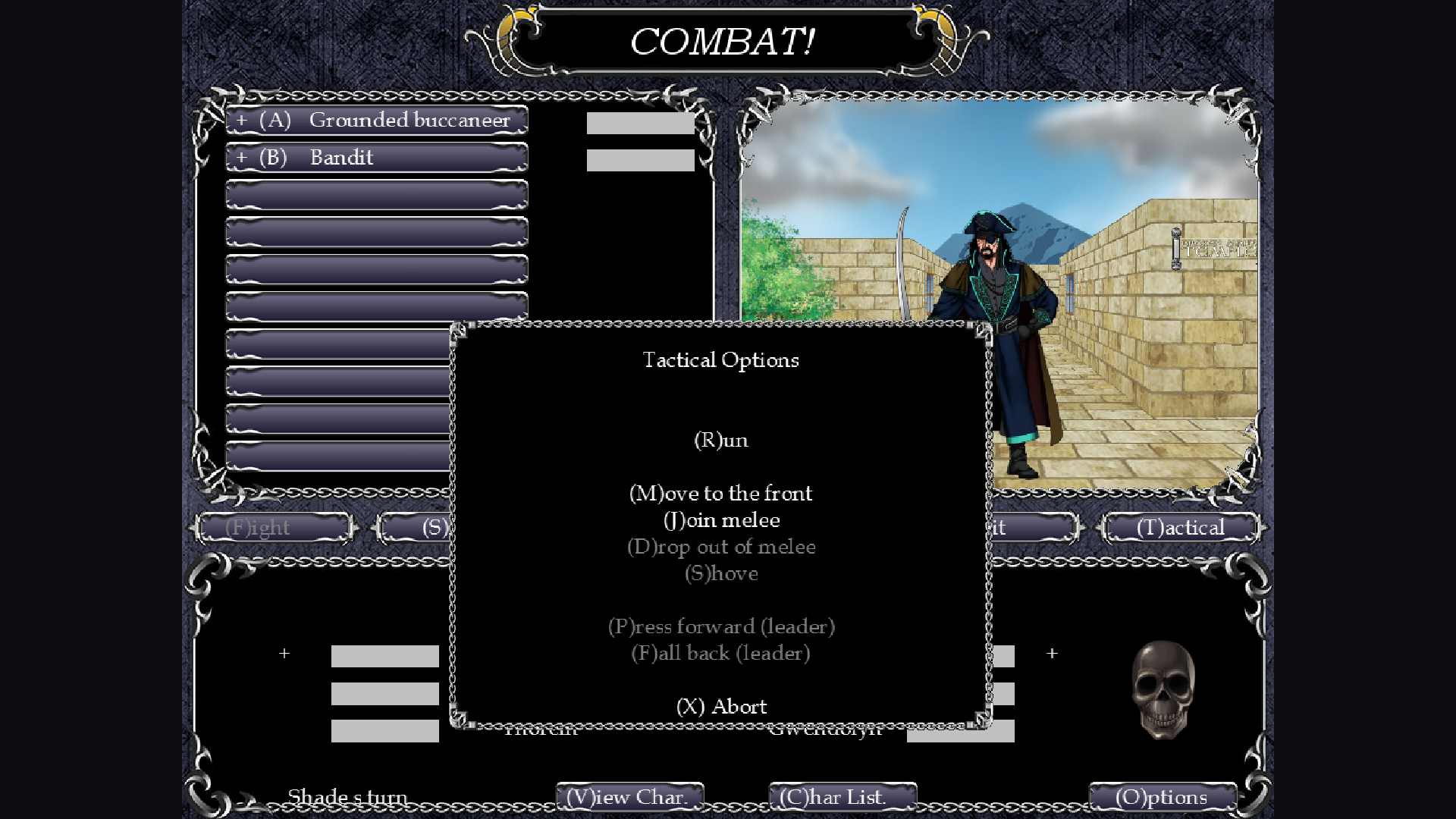
Underworld Gold has new combat rules that involve distance management, adding both realism and tactical depth. In previous versions only monsters were marked in or out of melee (a + indicated that they were in). Now the same goes for characters. This opened the door to a few extra tactical options.
– Any character can rush to the front.
– Characters in melee can choose to step back.
– Those behind the lines can choose to step in.
– Characters in melee can attempt to shove enemies out of melee.
– Party leader can order the party to press forward. This only uses up the leader’s turn and causes both monsters and characters to enter melee.
– Party leader can order the party to fall back. This only uses up the leader’s turn and causes both monsters and characters to leave melee.
They each have their advantages and drawbacks. A character that leaves melee avoids exposure from blades, but increases it for those left in. He can no longer use his melee weapon but can now use his ranged weapon (only available out of melee, except for archers). That can be a downside however because bows, crossbows and slings are typically less effective than swords and hammers. Previously, all characters were considered in melee, exposed to the monsters that were as well. Also, these actions use up a battle round for the character.
The first three can affect the order. If there are four characters in melee and the second leaves the pack, he finds himself leaving that second slot and taking the fourth. The third and fourth move up a notch and there are only three left in melee. If a character rushes to the front, all the others fall back a notch, but none leave the melee even if that character comes from behind the lines.
Enemies also have the option to join (this isn’t new) or leave (but this is) melee. Shooters and casters using the leave melee option, as well as melee fighters being able to join the meatgrinder, will make some battles more difficult and engaging. This affects their order as well. One consequence is that they are almost never left with no other choice but to wait. Previously monsters could only enter melee if the monster just ahead of them was already in. Now any of them can, anytime.
Diagrams
Note: These aren’t in the game, just here for illustrative purposes.
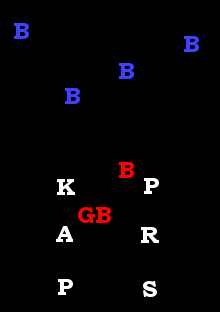
The above illustrates a combat situation similar to the one in the screenshot, only with a few more bandits.
The Knight, Paladin, Archer and Rogue are in melee . If the party formation was a little less neat one could imagine the rogue being just out of the melee but in this situation all four are marked with a +. The Grounded buccaneer and the first bandit are also in melee. The following four are not.
Now let’s see the options again in this context:
– Any character can rush to the front. Anyone but the knight will have this option. If the Rogue chose to do this the diagram would become something like:
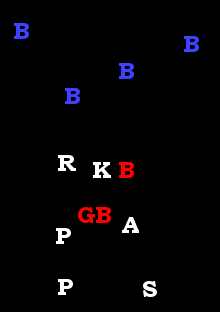
Some shuffling occurs for the sake of keeping the three rows but it isn’t entirely necessary. I could also have kept the paladin close to the bandit and messed up the three rows but those are convenient for picturing and it doesn’t hurt.
– Characters in melee can choose to step back. If the knight steps out of melee at this stage there are only three left:
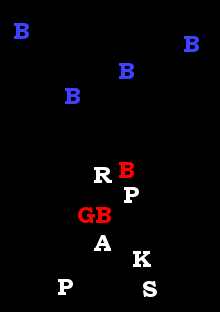
– Those behind the lines can choose to step in. Three may not be enough so the Sorcerer decides to step in front of the Knight (bad idea in most cases, unless looking for the Paladin’s (P)rotection perhaps):
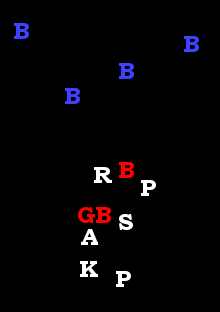
– Characters in melee can attempt to shove enemies out of melee. Â A good way to isolate someone, or take some pressure off the front line. There are still 4 characters in melee (and 1 mob)..
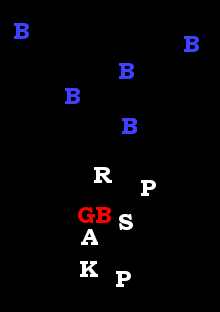
– Party leader can order the party to press forward. This only uses up the leader’s turn and causes both monsters and characters to enter melee.
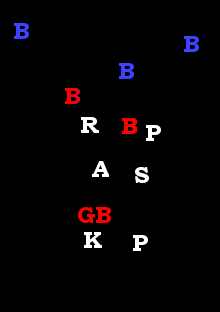
– Party leader can order the party to fall back. This only uses up the leader’s turn and causes both monsters and characters to leave melee.

This makes combat a little less orderly. Monsters and characters alike can get all mixed up. It also opens the door to new spells and special attacks… 😉  Ultimately it makes combat more difficult, as monsters will have more opportunities to inflict damage. But the increased difficulty is compensated by new skills for the knight, rogue and archer, as well as a more favorable loot system. I may actually need to increase difficulty a bit more. More on those on the next post!
Also a lot of testing is in order to make sure the monster AI uses the new options coherently, and that I haven’t broken anything.
Any thoughts on this? Is the tradeoff between simplicity and tactical depth good or bad in your opinion? Discuss!





This sounds like a good idea…without seeing it in practice however, it is a bit difficult to visualise. Any chance that you could create a movie of an involved encounter?
Any extra tactical depth is always good. What you describe could be great, I just want to see it ‘in action’. If you want to take the tactics further than this though, you may have to think about an isometric combat ‘window’ similar to Realms of Arkania, et al, whereby you will still have the Underworld adventuring system, but switching to isometric combat.
Keep up the great work Charles!
@Greg Hi Greg,
A video probably won’t help visualize much. That is the problem with text-based. I think being in the driver’s seat is probably the only way to go to really “see” it.
I’ll try recording a few though and see. Otherwise the demo will be out soon.
I do realize that for optimal tactical turn-based combat isometric has the highest potential. Something to think about for later games 🙂
Thanks!
I think the system makes the combat indeed more tactical or gives you more choices at least. I assume the system needs a little bit time to get used to because of text only (probably not much). How about just showing a top down grid system just to show the individual positions? Here’s an example from the game Ambermoon: http://www.mobygames.com/game/amiga/ambermoon/screenshots/gameShotId,55254/
Since you want to publish it on Steam it could help to make it more accesible through visualization.
@Morkar Hi Morkar,
Honestly I’d rather take on a top-down isometric than going hybrid like that. Like Greg suggested maybe just for the combat. But that won’t be for this project or the next. Further down the road as I learn and grow out of this model.
Note for the text there will be a game speed option. Start slow to get used to it then speed it up for more comfort.
As for Steam I’ll definitely apply… That is all I will say for now 🙂
Thanks for the input!
Could you have a small abstract formation display of your party showing their positions relative to each other to indicate your changes.
@quasimodo I’m not sure I’m following you but the current layout is indicative of their positions: three rows with the top row representing the front line.
Then there’s the list of monsters. Those in melee, marked with a plus, are basically in and around the three rows (edit: actually the three rows if all six are marked in melee – otherwise only as many as there are characters in melee, the others being behind). Those that aren’t are ahead, just out of reach of the front line and beyond.
The primary weakness actually is the party can’t be surrounded or flanked.
Now to what you’re asking. You’d like a dynamic diagram ingame (that evolves as the situation changes) or on the site just to clarify?
I was thinking of a ingame diagram….sort of like Wiz8. But I guess that would be useful only if the party could be surrounded and flanked….like Wiz8.
@quasimodo Darn. I just finished the diagrams. I updated the thread. I think it may clarify things. Even for me it worked me through the processes again.
It isn’t Wiz8 (that’s a few years ahead of me) but still the system allows the party to be overtaken. To be surrounded would mean some mobs on top of the list not being in melee because they’re behind it.
Interesting. I meant to write a comment before, but somehow didn’t get around to it.
I noticed when I started playing Underworld that there was no distance save mobs being in- or outside melee, which I found a small disappointment. The new system is intriguing, I haven’t seen something like that before. My only worry is that it’ll make combat alot harder and more unpredictable. That may be a good thing.
However, one issue I have with combat in UW is that almost every attack seems to hit. Crowd control is my biggest worry by far in the game, and I use spells mostly to keep enemies out of melee and to unleash mass destruction.
A brawl with shifting positions sounds interesting, but I have to wait and see how well it works in UW’s combat system.
@Claw
Hey Claw,
Sorry I missed your comment notification, or didn’t get one for some reason. Good thing I check into the admin once in a while to make sure the spam filter didn’t eat up the wrong comment.
There’s a demo available in the codex workshop. There are a lot of bugs though, it’s a premature release. They’re fixed for the most part and I’ll update it soon.
You’ll also find I made good on my promise concerning the installer 😉
I think this is a great feature over all, and once we get used to it, I don’t think we need an overview or a diagram. It also add so many options for skills or spells to control the amount of brawl the player wants. It also forces you to plan for the possibility of H-to-h combat for everyone.
Couple of ideas:
Maybe someone with high dex or someone who append to be at the front could rush an enemy spell caster?
The key is to have a system simple enough so that combats don’t require 20 minutes of chess grade analysis while offering more options then typical Attack/cast/wait.
@JF
I didn’t quite understand “someone who append to be at the front could rush an enemy spell caster”…
I agree with the key, and hope that I found it. And finally debugged it entirely. Those subtleties did a bit of damage with older code that wasn’t supposed to be interfering but did. Those things have a mind of their own 🙂